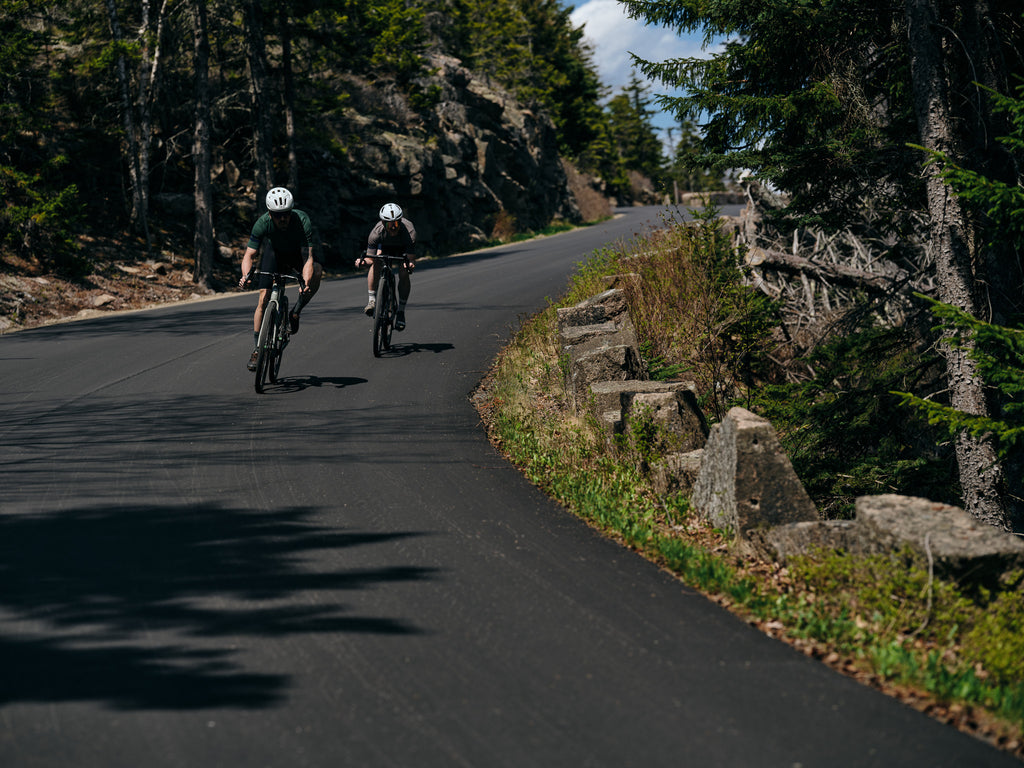World Class Cycling In Acadia National Park

Acadia National Park is the best place in America to ride a bike.
Ok, hear me out. To be a great cycling destination a location must have the following: beautiful scenery, interesting and exciting terrain, it must be easy to navigate, and above all, it has to be a safe place to ride. Acadia has all of this and more.

Acadia National Park is located on Mount Desert Island off of Maine’s mid-northern coast, also called “Downeast” Maine. Mount Desert Island is hardly an island, there’s a thin strip of water separating it from the mainland and if you’re not paying close attention you probably wouldn’t even notice that you’ve crossed over. The island was popularized by wealthy summer visitors in the 19th century, led by the Rockefeller family of New York. In 1919 it was designated a national park (as Lafayette National Park) and then renamed to Acadia National Park in 1929.
Today, it’s one of the most popular National Parks in America because first and foremost, it’s spectacularly beautiful. Lush Pine forests, rocky coastline, and picturesque granite mountains—you can experience quintessential Maine all in one small-ish space. Additionally, coastal Maine’s summer weather—typified by warm days and cool nights—is ideal for visitors and outdoor enthusiasts.

So what makes it such a great place to ride? If you’re looking to ride fast and effortlessly then look no further than the Park Loop Road. It’s 27 miles of immaculate tarmac. The Park Loop Road is a closed loop so there are no impatient motorists trying to pass through, everyone is there for the scenery. It’s mostly a two lane road and one-way traffic with slow speed limits of 25 to 35 mph. The loop will also take you past all of the famous must-see landmarks like Thunder Hole, Otter Cliffs, Jordan Pond, and Cadillac Mountain. The ride to the top of Cadillac is as beautiful as it is challenging.
Speaking of Cadillac Mountain. Riding up the tallest mountain on the Atlantic Coast should be a rite of passage for any cyclist. The 3.5 mile road to the summit is well-maintained and is low gradient most of the way, making it achievable for cyclists of all abilities. The view from the summit is well worth the effort of the climb.

For the gravel lovers Acadia’s 45 miles of pristine gravel carriage roads are absolute heaven. Originally financed by John D. Rockefeller Jr., the carriage roads are closed to motor vehicle traffic. You are only permitted to travel by foot, bike, or horse. The National Park Service goes to great lengths to protect these manicured routes and I challenge you to find a gravel road network anywhere in the world as well maintained. They are exciting and challenging to ride, with varied terrain like flat loops that circumnavigate lakes and ponds, rolling hills, and long mountain climbs, unlocking views of the park that most people simply don’t get to experience.
One final factor that makes Acadia National Park ideal is its size. You can easily cover most of it by bike in a few hours or a full day. The relatively small island footprint makes all of the landmarks and attractions easily accessible. I typically like to spend one day on the Park Loop Road and a second day on the carriage roads. Of all the places in America I’ve been fortunate enough to visit and explore by bike, nothing beats Acadia National Park. But shhh, don’t tell anyone, let’s keep it our little secret.







Leave a comment